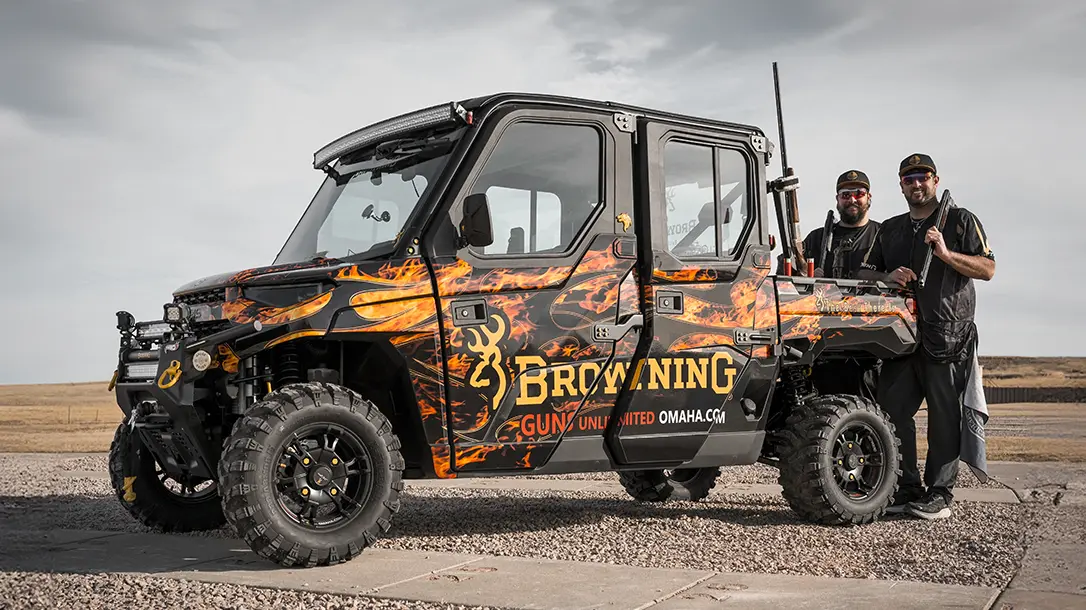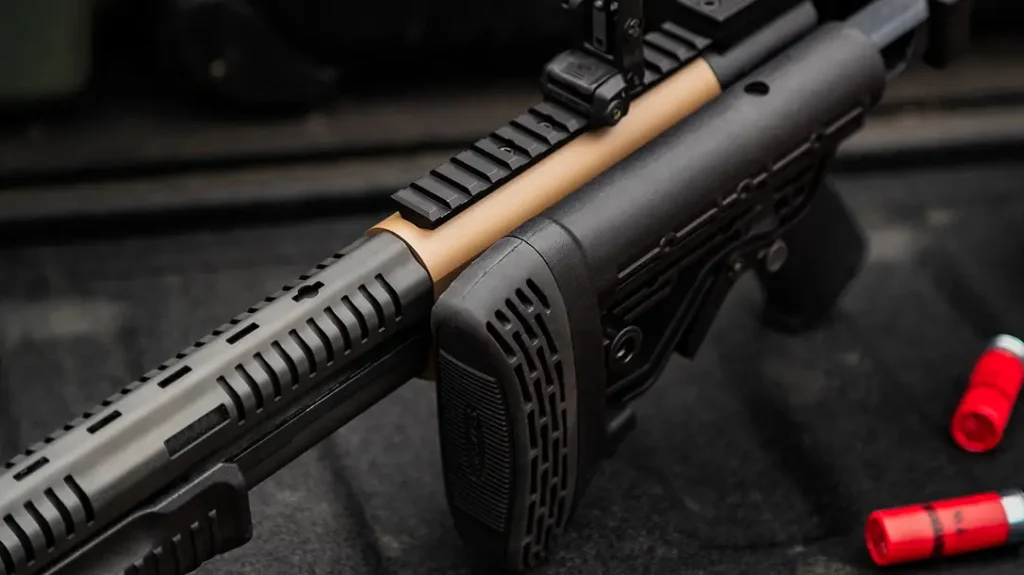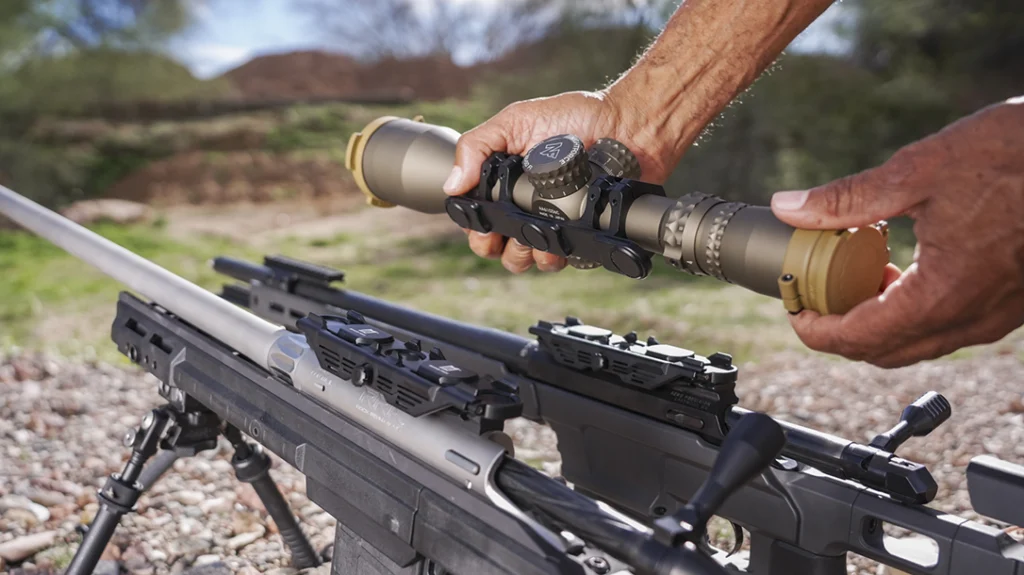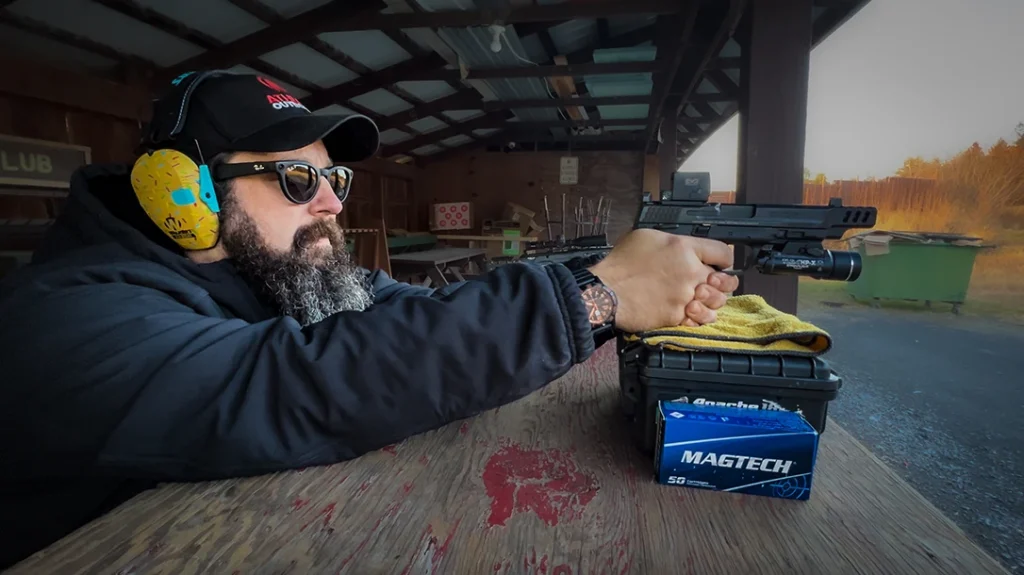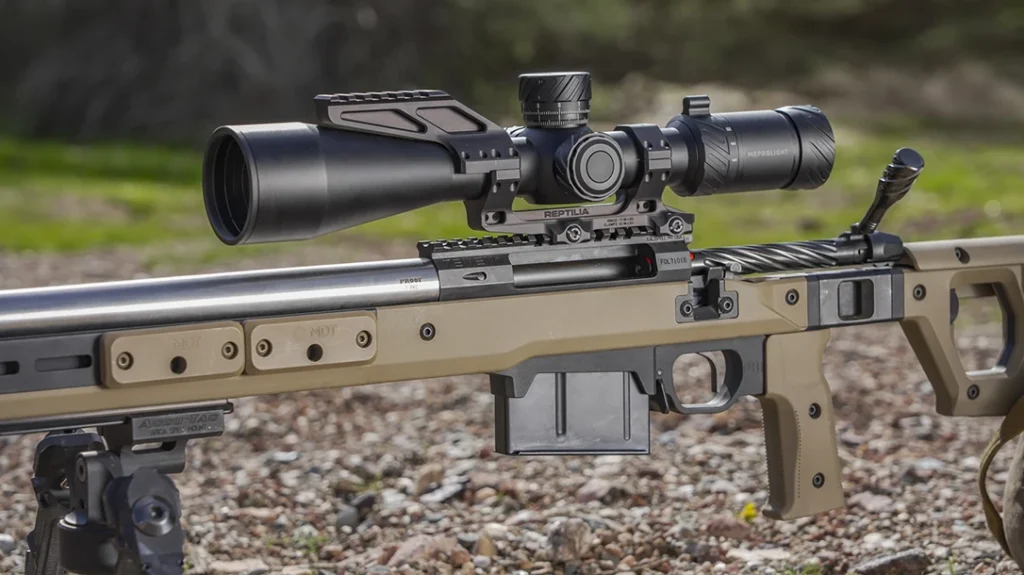I’ve been shooting for nearly 50 years and though I shoot a rifle well, my struggle is wingshooting. It seems I just can’t get the lead figured out, and I am not able to swing on the targets smoothly. I asked the Bartholow brothers, Foster and Matt, Browning /Winchester Pro staffers and Trap shooting phenoms, for some tips to make a better shooter whether it be trap, skeet, sporting clays or in the field.
Tips From the Pros: Browning/Winchester Pro Staff Bartholow Brothers
Tip 1: Pay Attention to your Footwork
One of the things every shooter should work on, regardless of the discipline, is their footwork. Many shooters have been brought up using the hunting stance. Foster recommends squaring the body with the trap house and instead of swinging your arms, let the upper part of your body swivel like a tank turret.
If you use your arms to swing the shotgun instead of your hips, you will be pulling your face off the stock at the far end of your swing. And if your footwork is off, you will be able to feel it. If you are swinging to a left bird as a right-hand shooter, you will hit a certain point where your left knee will want to bend, or you will slow down your swing. To combat this, Foster recommends flaring your toes one way or another. This will help you swing on the target all the way through with the target.
Advertisement — Continue Reading Below
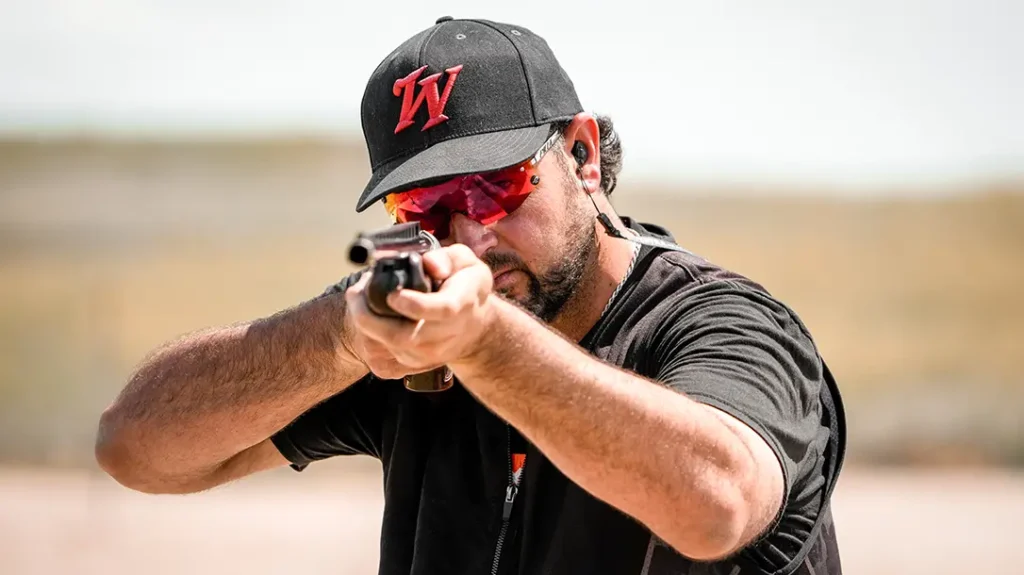
Tip 2: Eye Dominance
Foster was left-eye dominant when he started shooting. He incorporated the dot system where a dot is temporarily installed on your shooting glasses. This dot obscures your vision on one side, usually your weaker eye, but not always, and allows your dominant eye to aim without the other eye trying to take over. “I recommend trying a dot on your glasses before trying to switch over to shooting left-handed if you are a right-hand shooter but left eye dominant as I was,” says Foster.
Tip 3: Finger Placement on the Trigger
Don’t curl your finger around the trigger. This causes a lot of stress and pressure on your finger and requires more pressure to pull the trigger, causing you to twist the gun. Instead, use just the tip of the pad of the finger between the tip of your finger and the first crease.
Advertisement — Continue Reading Below
Tip 5: Figuring Out Leads
While Foster claims sporting clays is closer to hunting than any other discipline, having leads figured out and gun control are paramount. He also warns not to get too settled on your leads as when hunting they can quickly change.
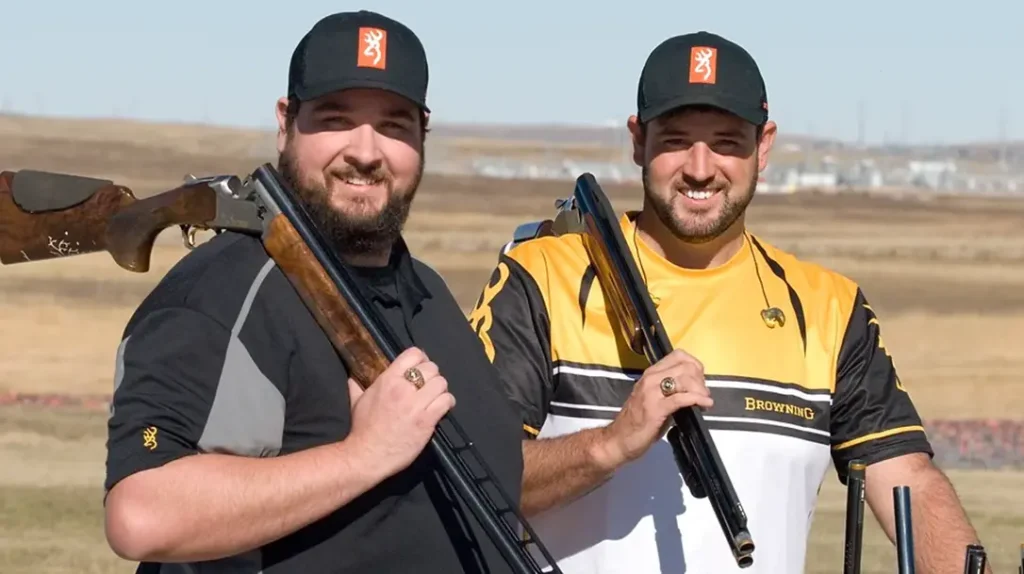
Tip 6: Practice Like You Hunt
To prepare for hunting, the Bartholows recommend shooting the way you will be shooting in the field. If you are a waterfowler and hunt from a lay-out blind, practice shooting from the sitting position to emulate your hunting experience. The same practice applies with dove hunting if you sit in the field and shoot from the seated position.
Advertisement — Continue Reading Below
Tip 7: Patterning Your Shotgun
Foster and Matt approach patterning differently. “Anytime something changes, whether it’s a choke tube or a different load, I pattern my gun so I know where it is hitting. I will pattern throughout the trap season, and I’ll pattern my turkey gun throughout the turkey season. It’s a confidence thing. By knowing how your gun shoots, it helps build confidence in your gun,” says Foster. In contrast, Matt may pattern his gun at the beginning of the season and never pattern it for the remainder of the season, unless he changes choke tubes.
Tip 8: Shoot a Gun that Fits
Many firearm enthusiasts buy the latest gun their favorite shooter is using at the trap range, only to learn it does not suit them. It’s important to find what fits you and what gives you the most confidence. Go into Cabela’s or Scheel’s and see what gun fits you best.
“Right now, for dove I’m shooting the same gun I shoot sporting clays with. I like the way it points and I’m so familiar with the way it shoots. But for goose season, I’ll switch over to the Maxus 2,” says Foster. “One of the biggest things to look for when choosing a shotgun is where your eye lines up on the rib and how comfortable it feels when pulling the gun to your shoulder. If you try three different guns, one will feel very comfortable, and your eye is sighting down the rib naturally.”
Advertisement — Continue Reading Below
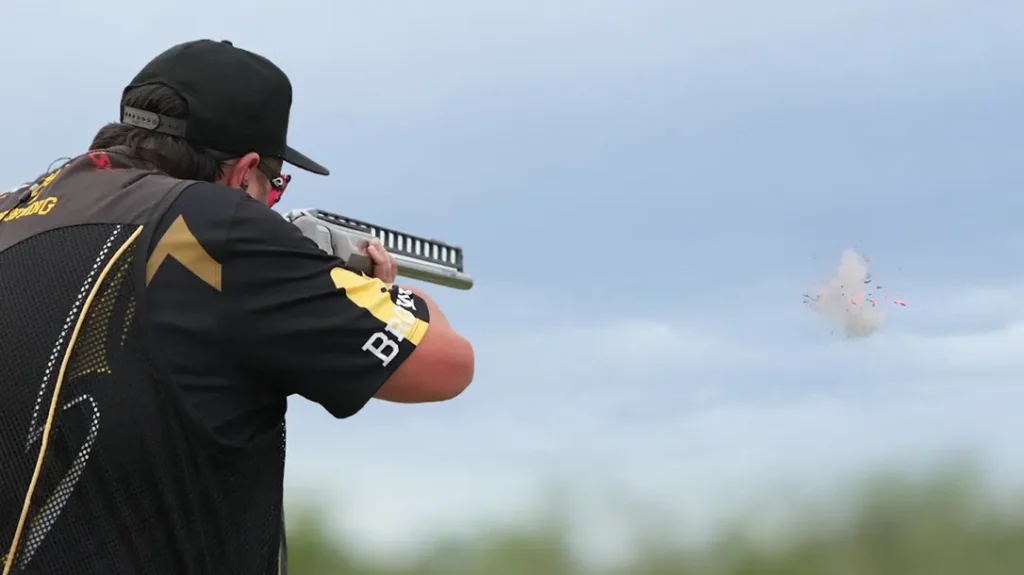
If you have a shotgun that doesn’t feel “right” If the sight picture is seeing too much rib, Matt recommends a product called Cheek EEZ pad. This is a soft, spongy-like pad with adhesive that attaches to your buttstock and raises your cheek on the stock. It allows your eye to gain a better sight picture of your target.
Tip 9: Match Your Shotgun to Your Sport
When pressed about their favorite type of shotgun, the over-under was the hands down winner for trap shooting. Foster also does a lot of bird hunting and claims he also likes the over-under for turkey hunting. “I am able to have two different chokes in the gun. If a turkey hangs up at 40 yards I can switch to the full choke and smoke him, or if a bird comes in at 15 yards I can switch over to the modified choked barrel and still make the shot, as the modified has a better pattern close range. For waterfowl, the brothers switch over to a gas gun. “It seems you always need that third shot and it’s a little less recoil,” says Foster.
Advertisement — Continue Reading Below
Tip 10: Off Season Workout
Foster recommends not stowing your trap gun away for the season. Instead, keep the gun handy to do lifts throughout the winter months. Even if you don’t hunt, Foster recommends doing gun lifts. I’m always doing gun lifts even though I hunt throughout the winter. He will do 25-50 gun lifts every few days to maintain his muscle memory and retain the strength in his shoulders.
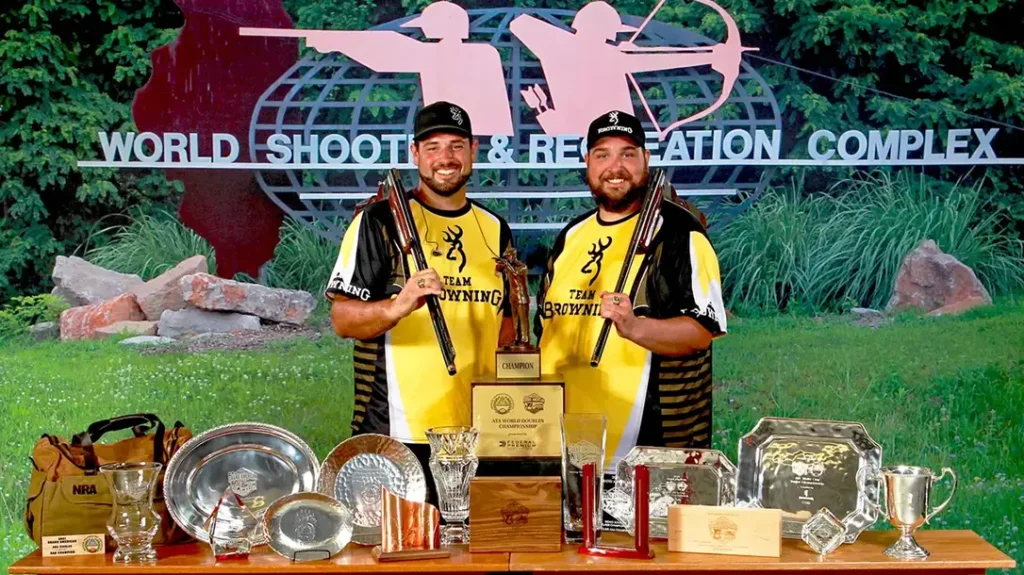
Parting Shots
Can this advice make you a better wingshooter? It will not if you don’t put it into action. Shotgun shooting, whether its trap or hunting, always presents different challenges. But as Foster says, “You miss 100% of the shots you don’t take. I try to take advantage of every shot I can.”
Advertisement — Continue Reading Below
